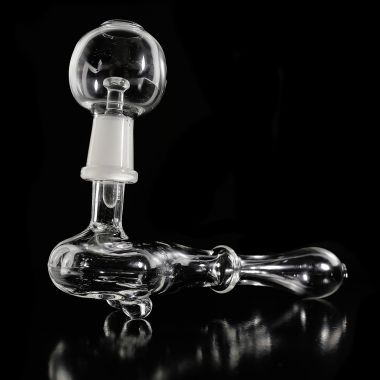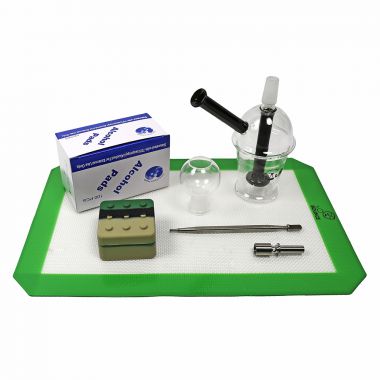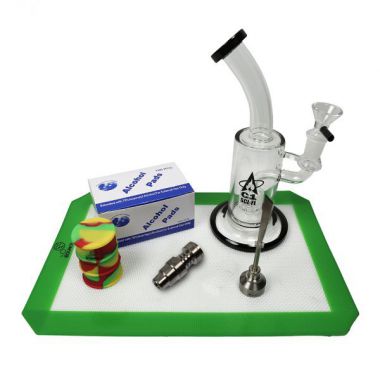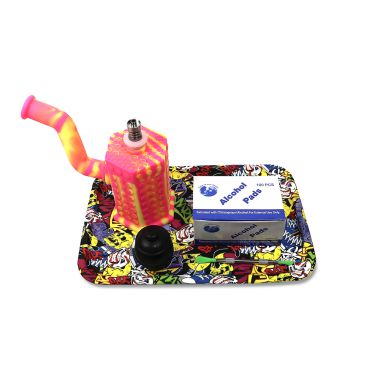Order by 3:30pm Monday to Friday for same day dispatch
- Our London Shop 0208 293 9231
- Online Enquiries 0208 293 9231
Dab Rigs
If you're searching for your first rig or looking to add a new piece to your collection, you've come to the right place. All our glass pieces are crafted with meticulous attention to detail and quality. We offer a wide range of designs in every conceivable shape and size, allowing you to select the perfect bong with confidence!
30 products
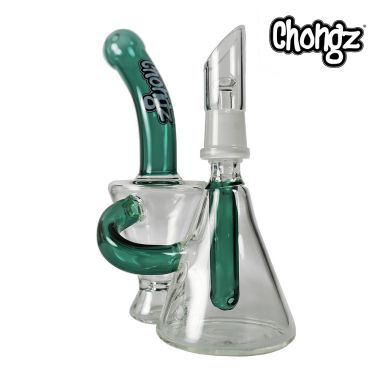 Chongz 'Main Line' 16cm Glass Oil Rig Recycler £36.99Free UK Delivery
Chongz 'Main Line' 16cm Glass Oil Rig Recycler £36.99Free UK DeliveryIntroducing the 'Main Line' 16cm Glass Oil Rig Recycler by Chongz!
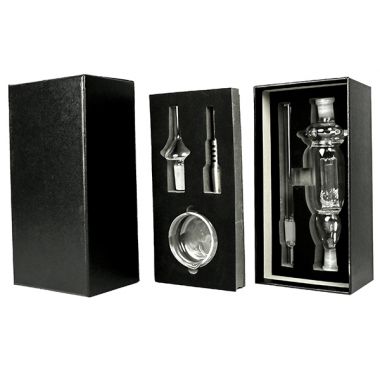 14.5mm 5 Part Glass Nectar Kit £32.99Free UK Delivery
14.5mm 5 Part Glass Nectar Kit £32.99Free UK DeliveryUpgrade your current dab setup with the 14.5mm 5 Part Glass Nectar Kit.
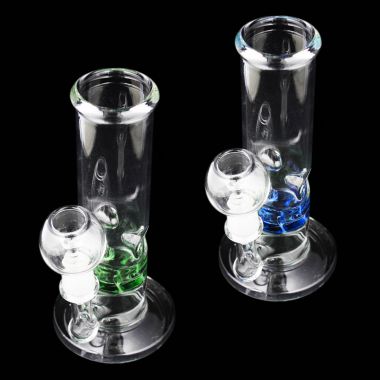 Mini Honeycomb Glass Oil RigFrom £22.99
Mini Honeycomb Glass Oil RigFrom £22.99The Mini Honeycomb Glass Oil Rig is a cool looking gadget that will get you the job done at a very low cost!
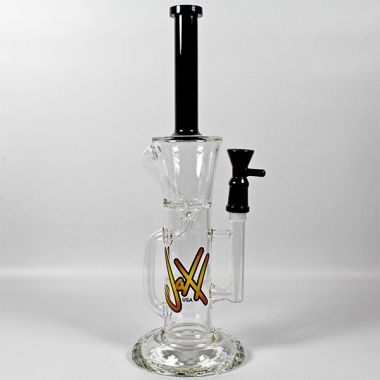 Jaxx USA 'Frankie Costello' 38cm Bong/Oil Rig£119.99Free UK Delivery
Jaxx USA 'Frankie Costello' 38cm Bong/Oil Rig£119.99Free UK DeliveryThe Jaxx USA 'Frankie Costello' is one of the greatest 3 chamber recycler bongs on the market right now. Named after the legendary Italian-American Mafia boss, the 'Frankie Costello' is the perfect recycler for either beginners or experts alike.
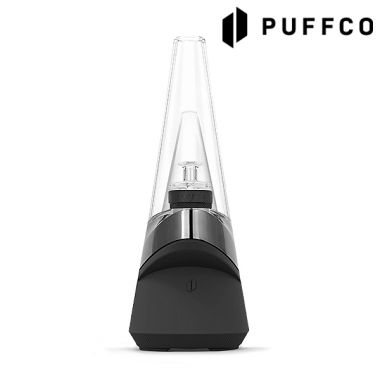 Puffco Peak£230.00Free UK Delivery
Puffco Peak£230.00Free UK DeliveryWant the most efficient and enjoyable concentrate consumption experience? Now faster and easier than ever before, with no learning curve? Look no further than the Puffco Peak.
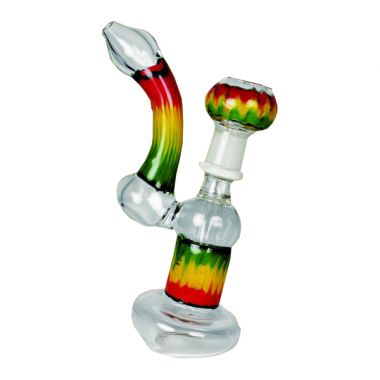 Rasta Oil Bubbler£19.99+ A free Quartz Bulldozer Banger & Carb Cap
Rasta Oil Bubbler£19.99+ A free Quartz Bulldozer Banger & Carb Cap The Rasta Oil Bubbler is a serviceable device that will allow you to dab with style!
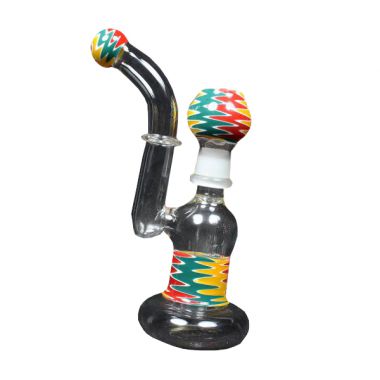 Rasta Zigzag Oil Bubbler£19.99
Rasta Zigzag Oil Bubbler£19.99The Rasta Zigzag Oil Bubbler is a 3 piece device consisting of a glass, dome and as well as the oil bubbler body.
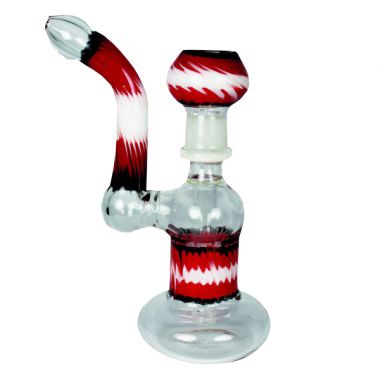 Red Herringbone Dab Rig£19.99
Red Herringbone Dab Rig£19.99The Red Herringbone Dab Rig is a fantastic piece of glassware that will get you covered whenever you fancy a classy dab!
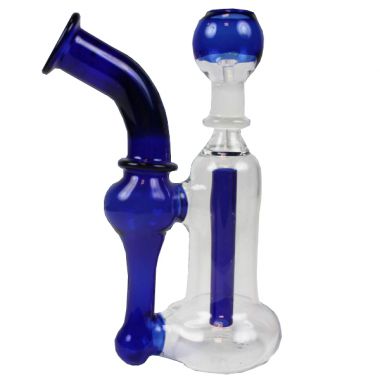 Steamy Mini Oil Bubbler£18.99
Steamy Mini Oil Bubbler£18.99The Steamy Mini Oil Bubbler is a nice looking and comfortable device that resembles a bunch of old steam powered pipes!
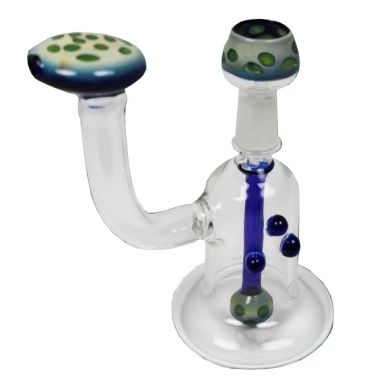 Stropharia Glass Oil Bubbler£21.99
Stropharia Glass Oil Bubbler£21.99The Stropharia Glass Oil Bubbler is a nice looking gadget that has been provided with a very organic shroomish appearance that is sure to delight you and enlighten you!
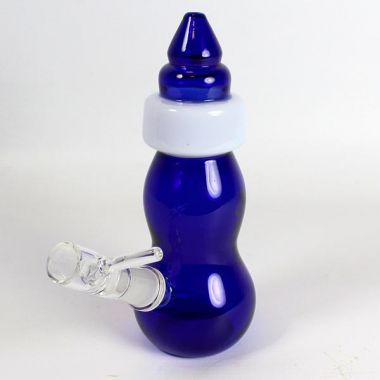 Cheeky One Isotrope Glass BongFrom £24.99
Cheeky One Isotrope Glass BongFrom £24.99The Cheeky One Isotrope Glass Bong is a new addition from the Cheeky One Sci-Fi range
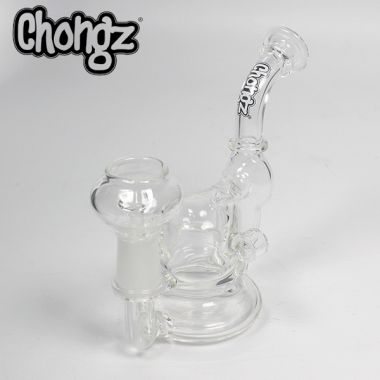 Chongz 10cm 'Chucky' Glass Oil Rig£23.99
Chongz 10cm 'Chucky' Glass Oil Rig£23.99The Chongz 10cm 'Chucky' Glass Oil Rig is a real miniature flavour savour, perfect for tasting those subtle flavour profiles in your favourite concentrates.
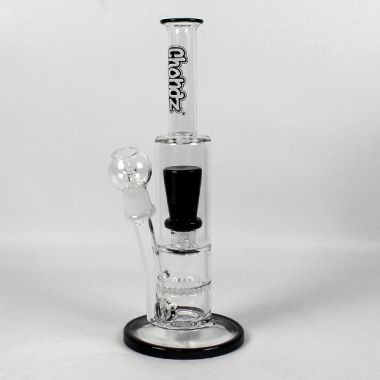 Chongz 29cm 'Brassneck' Oil Rig£54.99Free UK Delivery
Chongz 29cm 'Brassneck' Oil Rig£54.99Free UK DeliveryOne of the most functional and clean pieces in the Chongz artillery is the 'Brassneck' Oil Rig.
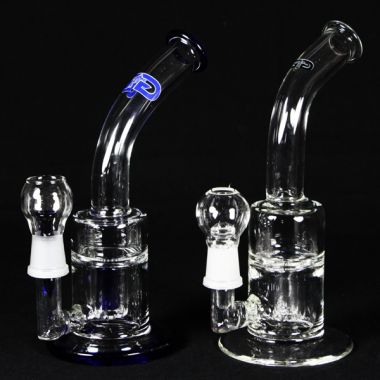 Grace Glass Diffused Oil Bubbler BongFrom £47.99Free UK Delivery
Grace Glass Diffused Oil Bubbler BongFrom £47.99Free UK DeliveryThe Grace Glass Diffused Oil Bubbler Bong is an awesome piece of kit, giving you the option of both oil nail and herb bowl in one handy little bong. Available in a choice of Clear or Blue colour.
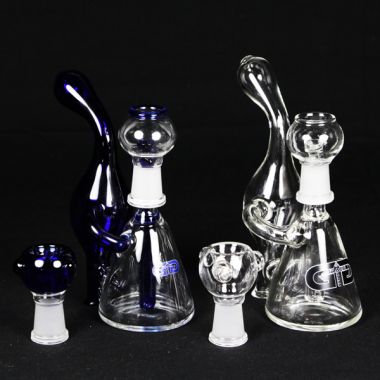 Grace Glass Recycler Oil Bubbler BongFrom £44.99Free UK Delivery
Grace Glass Recycler Oil Bubbler BongFrom £44.99Free UK DeliveryThe Grace Glass Recycler Oil Bubbler Bong is an awesome piece of kit with an amazing recycler built in. It comes with both an oil dome and glass nail as well as a herb bowl. Currently available in either blue or clear.
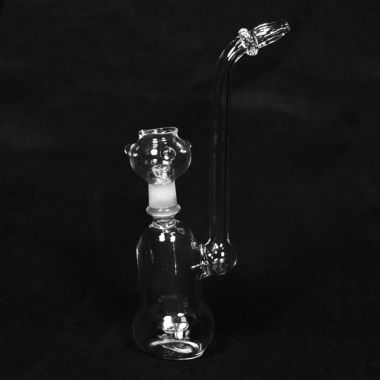 Glass Oil Bubbler with Dome£22.99
Glass Oil Bubbler with Dome£22.99The Glass Oil Bubbler with Dome is an awesome little bubbler designed specifically for use with oils and wax. Perfect for personal use or passing around.
 Grace Glass Diffused Oil Bubbler BongFrom £47.99Free UK Delivery
Grace Glass Diffused Oil Bubbler BongFrom £47.99Free UK DeliveryThe Grace Glass Diffused Oil Bubbler Bong is an awesome piece of kit, giving you the option of both oil nail and herb bowl in one handy little bong. Available in a choice of Clear or Blue colour.
 Grace Glass Recycler Oil Bubbler BongFrom £44.99Free UK Delivery
Grace Glass Recycler Oil Bubbler BongFrom £44.99Free UK DeliveryThe Grace Glass Recycler Oil Bubbler Bong is an awesome piece of kit with an amazing recycler built in. It comes with both an oil dome and glass nail as well as a herb bowl. Currently available in either blue or clear.
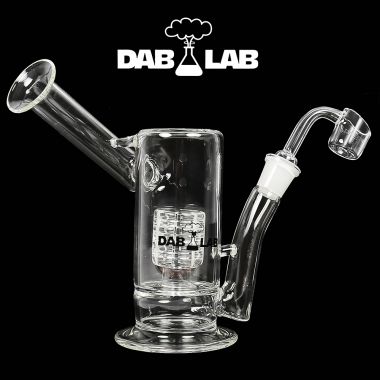 Dab Lab Dabboo Oil Rig£34.99Free UK Delivery
Dab Lab Dabboo Oil Rig£34.99Free UK DeliveryHere is another affordable, functional rig from Dab Lab, introducing the Dabboo!
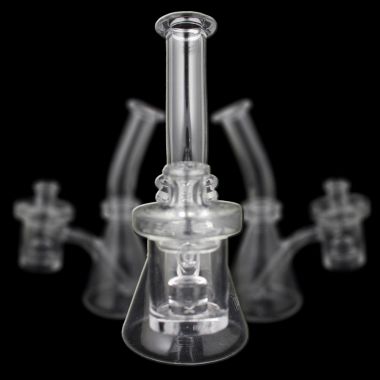 Dab Labs Reactor Core Banger Beaker£29.99Free UK Delivery
Dab Labs Reactor Core Banger Beaker£29.99Free UK DeliveryWith the DAB LAB Reactor Core Banger Beaker it just cannot get any better!
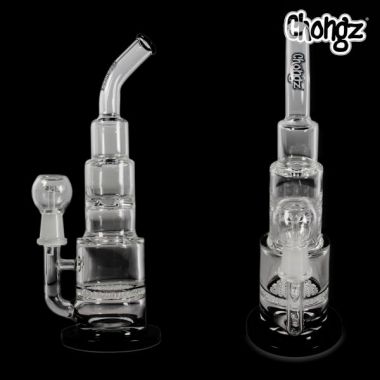 Chongz 'Pyros' 23 cm Glass Bong & Oil Rig With Honeycomb Dif...£39.99Free UK Delivery
Chongz 'Pyros' 23 cm Glass Bong & Oil Rig With Honeycomb Dif...£39.99Free UK DeliveryThe incredible Chongz 'Pyros' 23 cm Glass Bong & Oil Rig With Honeycomb Diffuser is one of those products that has been specially designed to fullfill every single one of your needs!
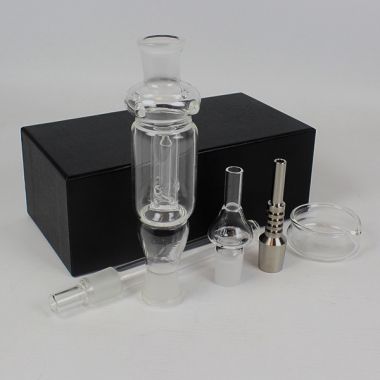 18.8mm Nectar Collector Kit£35.99Free UK Delivery
18.8mm Nectar Collector Kit£35.99Free UK DeliveryNectar Collector's are a really cool and diverse way for you to enjoy your favourite concentrates. Dose your dabs perfectly without using any excess, and enjoy them in a unique way.
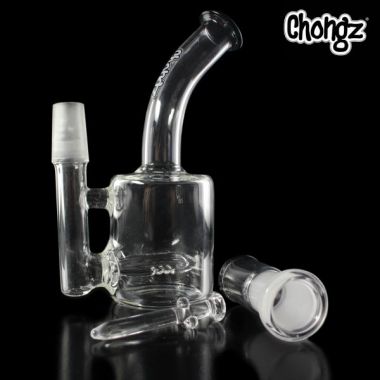 Chongz 'Boffins Bridge' Clear Glass Mini Oil Rig With Inline...£23.99Out of StockFree UK Delivery
Chongz 'Boffins Bridge' Clear Glass Mini Oil Rig With Inline...£23.99Out of StockFree UK DeliveryIntroducing Chongz 'Boffins Bridge' Clear Glass Mini Oil Rig With Inline Diffuser 12 cm into the Shiva catalogue.
 Chongz 'Glass Jaw' 16cm Glass Oil Rig Recycler£36.99Out of StockFree UK Delivery
Chongz 'Glass Jaw' 16cm Glass Oil Rig Recycler£36.99Out of StockFree UK DeliveryBreaking news for you dabbing lovers! The new Chongz 'Glass Jaw' 16cm Glass Oil Rig Recycler is now on stock!
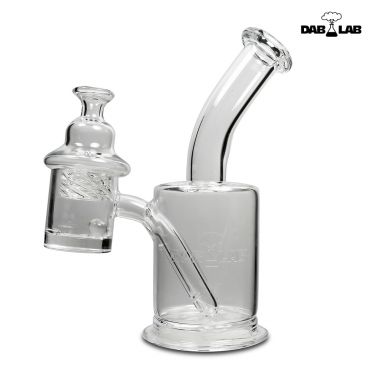 Dab Lab 'Centrifuge' Quartz Banger Beaker£29.99Out of StockFree UK Delivery
Dab Lab 'Centrifuge' Quartz Banger Beaker£29.99Out of StockFree UK DeliveryCompact Quartz Banger Beaker by Dab Lab. Featuring centrifuge quartz balls which swirl beneath a riptide carb cap to deliver the best functioning rig in the Dab Lab beaker range.
 Quartz Banger Beaker Oil Rig£24.99Out of Stock
Quartz Banger Beaker Oil Rig£24.99Out of StockThis Quartz Banger Beaker Oil Rig is made completely from Quartz! That means it is super strong and heat resistant! Just what you want from a dab rig!

